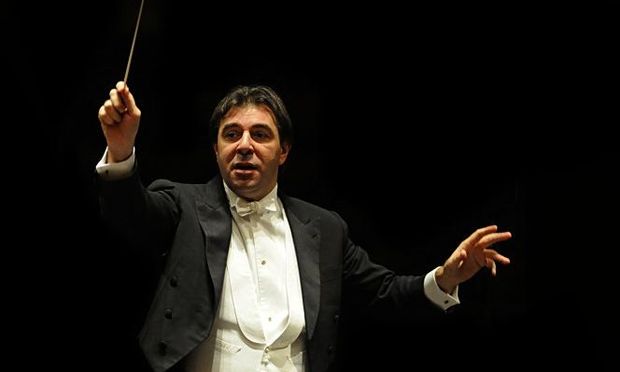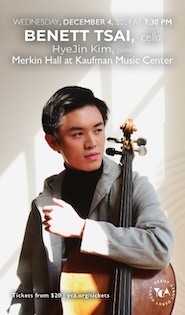Gatti, Vienna Phil go far and deep with Brahms 2 and 4

Daniele Gatti conducted the Vienna Philharmonic Orchestra in Brahms’ Second and Fourth Symphonies Saturday at Carnegie Hall.
Nothing against Brahms, but there’s no dearth of his music on concert programs, nor anything out of the ordinary about a series dedicated to his symphonic music, even one played by one of the most notable ensembles. One heads to such a concert expecting comforting satisfaction, the predictability an essential part of their success.
Conductor Daniele Gatti and the Vienna Philharmonic upended those expectations Saturday night at Carnegie Hall. They set their sights far higher and deeper, and delivered something beyond satisfaction: the indelible imprint of an enriching and transforming experience.
The program was Brahms’ Symphonies Nos. 2 and 4, and the second of three concerts that began Friday night with his first and third symphonies, and ends Sunday with Ein deutsches Requiem. The playing was beautiful, the thinking was fresh, and the feelings were intense.
Gatti had a specific idea about how to mark and shape phrases, and how to modulate tempos and dynamics. He and the musicians also explored unexpected and fascinating ideas about history. This added an especially marvelous edge of meaning to the companionable loveliness of the Second Symphony.
The first movement—marked Allegro non troppo—was key. Through the introduction and the opening statement of the theme in the strings, Gatti took the music slower and quieter than the norm. The sound of the orchestra was soft and buttery, and there was sense of atmosphere not usually associated with Brahms.
As this opening music developed and the full orchestra came in, the playing grew in volume, as it should, and also changed quality entirely, from black and white to full, sun-drenched color. It was an enormously expansive transformation with a metaphysical flavor.
This richness was affecting: if Brahms’ Symphony No. 1 is the sound of him escaping the shadow of Beethoven, Gatti heard the opening of Symphony No. 2 as an embrace, then a release, of the mantle of Wagner. It was vividly personal—Brahms finding and expressing his own voice. To hear this live in the moment was like hearing Brahms in the flesh. It was wonderful.
By beginning the first, and most subsequent movements of both works, at a slower tempo and softer dynamic, Gatti set the stage for incisive and dramatic changes in pace and volume, and the tactic also outlined a coherent large-scale view of each symphony as a work of constant, restless flow and change. It opened the way to stretches of exciting wildness, like in the finale of the Second and the scherzo and finale of the Fourth, with some bracing blaring from the brass.
It’s easy to credit the conductor when an interpretation has a surprising quality, and Gatti deserves full praise for the strength and clarity of his ideas. But he was not alone, and the orchestra played with great feeling all night, bringing conviction and life to those ideas.
They also sounded fabulous throughout, the full group better integrated than their visit last year, the brass more rustic. There was a tremendous low-end sound, with particularly outstanding playing from the viola section. Ronald Janezic’s horn solo before the coda in the Second’s first movement was ridiculously beautiful, and throughout the clarinets played with an almost irreverent sense of freedom.
Every measure could be a highlight, but the most vivid impressions included the feathery pulse of the Allegretto grazioso of Symphony No. 2, the dignified march and great tenderness in the second movement of Symphony No. 4, and the gorgeous, ultra-romantic lilt that opened that work.
The interpretation and performance of the Second Symphony was so fine that it seemed impossible that the Fourth could match it, but it even surpassed the earlier work. The whole symphony would drift into reverie before returning to earth and catching fire, like being inside Brahms’ mind during one of his long walks, where he wandered until he had a composition in his head. Gatti himself had it all in his head, conducting from memory the entire evening.
The Passacaglia and variations in Symphony No. 4’s finale were spine-tingling. It is a challenge to maintain the energy and forward line in this movement, and again, Gatti’s modulations of tempos and dynamics kept everything passionately involved—the intensity leaked out of the conductor in occasional grunts and moans.
After multiple ovations, there was an encore, a slightly melancholy and lovely Prelude from Act III or Die Meistersinger. Wagner sounding more than a bit like his nemesis Brahms.
This concert represented the entire point of classical music making. Brahms is commonly heard, but rarely played with such imagination, purpose, and feeling.



Posted Mar 02, 2015 at 11:29 pm by Fernando Perez
I was looking forward to reading this review as I was so impressed by this concert and I felt reassured that it was a shared experience: music at its best.